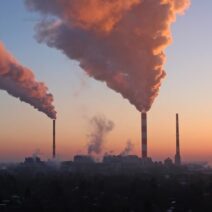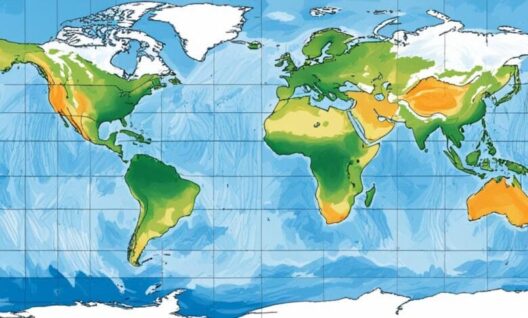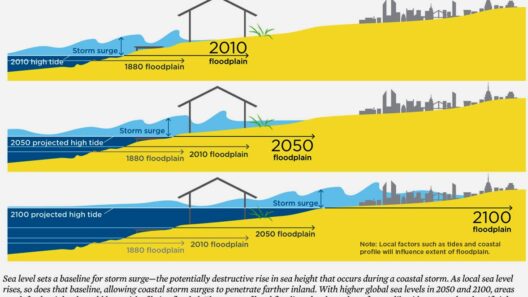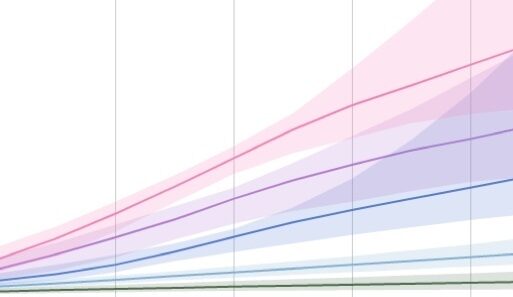Rising sea levels represent one of the most ominous consequences of climate change, heralding significant shifts in both our environment and human societies. The historical progression of sea levels is an intricate tapestry woven through geological epochs, shifting climates, and human interference. Understanding the timeline of rising oceans is paramount, as it provides critical insights into the transformations that our planet has and will continue to undergo.
Delving into the depths of this subject encourages a dynamic perspective on what rising sea levels entail, not just for the immediate vulnerable coastal territories, but for the entire biosphere. How long have sea levels been rising? When did this maritime transformation begin? And what fallout can we anticipate if these trends persist? These pivotal questions frame our exploration.
The Geological Antecedents of Sea Level Change
To comprehend the contemporary surge in sea levels, one must glance back to the Earth’s geological past. Over millions of years, sea levels have oscillated wildly, influenced by tectonic activity, glacial cycles, and changes in sedimentation patterns. During glacial periods, vast quantities of water were sequestered in ice sheets, leading to lower sea levels. Conversely, in interglacial epochs, such as the Holocene, rising temperatures caused glaciers to recede, releasing their frozen water back into the oceans.
Approximately 20,000 years ago, during the last Ice Age, sea levels stood approximately 120 meters (almost 400 feet) lower than today. As the Earth shifted towards warmer climates, this extensive glaciation melted away, giving rise to a gradual increase in sea levels that has continued to the present day. Thus, the history of sea level change is inextricably linked to the Earth’s climatic history, illustrating an ongoing natural cycle.
The 20th Century: A Turning Point
The latter half of the 20th century proved to be a pivotal era in the annals of sea-level rise. Accelerated industrialization, widespread deforestation, and the burgeoning use of fossil fuels propelled global temperatures to unprecedented heights. As the planet warmed, glaciers and polar ice caps faced alarming rates of melting, causing sea levels to swell at rates exceeding historical averages. Between 1900 and 2000, global sea levels rose approximately 20 centimeters (7.9 inches)—an ontological shift manifested through rising tides.
Equally significant was the phenomenon of thermal expansion, whereby water expands as it warms. This mechanism contributed substantially to the rising seas experienced in this century. Collectively, both ice melt and thermal expansion accounted for nearly 90% of the observed sea-level rise during the 20th century. The stakes could not be higher; coastal communities began to awaken to the reality of eroding shorelines and disintegrating habitats.
Lives and Livelihoods at Risk
As sea levels continue ascending, the implications grow more dire. More than 600 million people live in low-lying coastal zones, reliant on these regions for their livelihoods. This demographic faces a twofold threat: not only the immediate risk of flooding and land loss but also the long-term social and economic instability induced by such environmental challenges. Agriculture, real estate, and tourism—industries dependent on coastal health—stand at risk of catastrophic disruption.
Furthermore, the salinization of freshwater resources poses an additional layer of complexity. As seawater intrudes into aquifers and waterways—a process exacerbated by rising waters—the delicate balance of freshwater supplies becomes perilously jeopardized. Millions of individuals, particularly in developing nations, could find themselves bereft of clean water, entrenching cycles of poverty and displacement.
Scientific Projections and Future Trends
Looking ahead presents a dizzying array of scenarios. Projections from climate scientists suggest that, without substantial mitigation efforts, global sea levels could rise by as much as one meter (3.3 feet) by the end of the century. Such an outcome would dramatically alter coastlines, submerging entire islands and cities and forcing mass migrations that challenge social, political, and ethical frameworks anew.
Indeed, the future of rising sea levels is not merely an environmental issue but a human rights travesty in the making. The reality is stark: if emissions continue unabated, socio-environmental justice will become an increasingly pressing discourse. Coastal resiliency efforts, equitable policies, and stringent emissions regulations will be crucial to combat this inevitable tide.
A Call to Action: Understanding the Rising Tide
The story of rising sea levels is a narrative of human innovation and resilience. Throughout history, societies have shown remarkable adaptability; however, the question remains whether we can rise to meet the challenge posed by escalating maritime depths. Individuals, communities, and governments must engage with this phenomenon with urgency, striving to craft solutions that enhance climate resilience across vulnerable landscapes.
By fostering collaborative dialogues on sustainable practices and mitigation strategies, we can seek to rewrite the future of our coastlines. Perhaps the most profound promise inherent in this challenge lies in its ability to galvanize collective action and instigate a paradigmatic shift towards environmental stewardship. It is not merely about retaining land—it is about ensuring the survival of cultures, ecosystems, and futures yet to unfold.
In conclusion, the timeline of rising sea levels weaves together the Earth’s past, present, and future, offering a clarion call for immediate and decisive action. Understanding this phenomenon is not merely academic; it is a moral imperative that demands engagement, dedication, and, ultimately, hope.








